A healthy, filling breakfast, Sabudana Khichdi is delicious all year around. It's also popular during navratri as a Vrat ki recipe. I have six tips to make non sticky Sabudana Khichdi and I'm sharing them with you today.
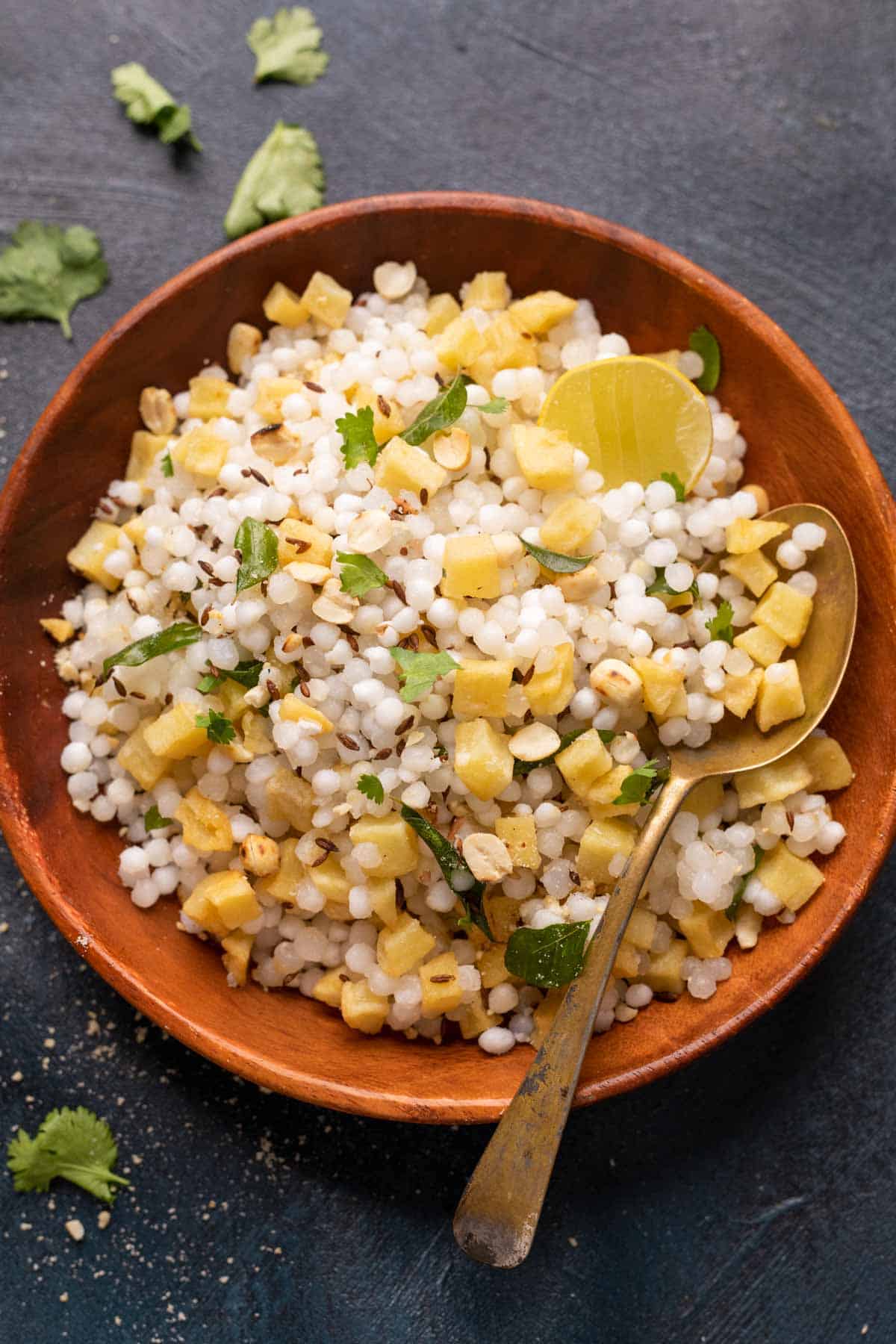
Sabudana Khichdi makes a weekly appearance on our breakfast table! I love how easy it is to put together and it's a really filling breakfast that sets you up till lunch. Which is also why it's a popular Navratri or Vrat ki recipe when you need to load up on carbs while fasting through the day.
Quick Walkthrough
Ingredients for Sabudana Khichdi
You only need a few ingredients for Sabudana Khichdi:
- Sabudana or Sago Pearls: They come in three different sizes. Choose the medium size for best results
- Ghee: Definitely recommend this as the fat of choice because it adds the best flavour
- Jeera (Cumin Seeds): For flavour and tempering
- Potato: Potato is standard for sabudana khichdi. You can make it without potato, but I love adding it. Cut it into ⅓ inch cubes so that it cooks faster
- Curry Leaves: Herb of choice. You can skip it but it really rounds everything up
- Peanuts: Roasted and crushed. These help make the sabudana less sticky and also add good fats and protein
- Green Chillies: This is such a simple recipe that green chillies help add the much needed heat
- Salt and Sugar: For balance. Don't worry, this isn't a sweet dish. A little sprinkle of sugar goes a long way. For a falahari sabudana khichdi, use sendha namak
- Lime Juice: Slight tanginess that's super refreshing
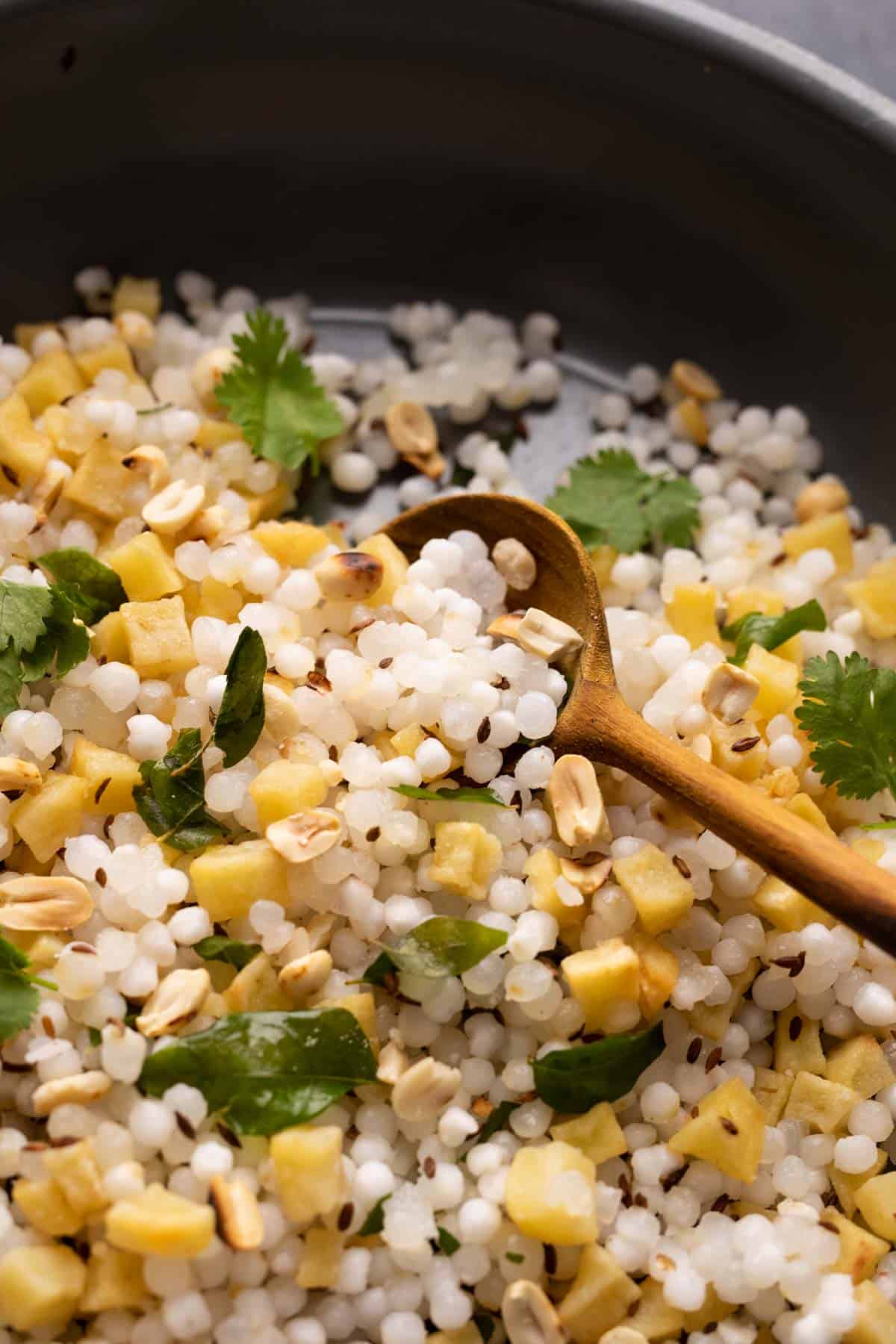
Sabudana Khichdi is really like a pilaf or pulao made with sago pearls. Its simplicity is what sets it apart. But if not made right, it can turn into quite a disaster with sticky, clumpy sabudana thats overcooked. What we are looking for is a dish made in a way that each sago pearl is separate, has just turned translucent and perfectly cooked.
I've made a lot of mistakes and had a lot of practice to get to a place where my Sabudana Khichdi looks like this. And this is not rocket science - just some patience and follow my tips!
6 Tips to make Non Sticky Sabudana Khichdi
- Wash Sabudana well to get rid of any excess starch under running water in a colander
- Soak it in a 1:1 ratio of Sabudana to water. So for one cup of sabudana you need a cup of water. The water should just cover the sabudana.
- Soak overnight for best results. I've seen recipes where sabudana is soaked for 2-4 hours but after a lot of trial, overnight gives me best results. Approximately 8 hours is good.
- Use crushed peanuts which help reduce the stickiness of sabudana khichdi and also add flavours, fats and protein
- Don't overmix after adding the sabudana to the pan. Once you add soaked sabudana, stir it well till everything is mixed and then let it cook on a lot flame for a few minutes. Stirring it over and over again makes the sago pearls clumpy
- Don't overcook the khichdi. Cook it for only a few minutes on low flame after mixing the sabudana till they start to turn translucent. If the sabudana overcooks, it'll start sticking to each other
Sabudana Khichdi is a delicious meal by itself. Some people serve it with curd or yogurt but I prefer it as is. This khichdi is gluten free and can be made vegan by replacing the ghee with oil.
LOVE THIS RECIPE? Subscribe to my newsletter and be the first to receive all new recipes!

Sabudana Khichdi
Ingredients
- 1 cup Sabudana approx 180 grams Sago pearls
- 1 cup Water for soaking
- 1 tablespoon Ghee or Oil
- 1 teaspoon Jeera Cumin Seeds
- ½ cup diced Potato cut into ⅓ inch cubes
- 2 sprig Curry Leaves
- 1 Green Chilli, finely chopped
- ¼ cup crushed roasted Peanuts skin removed
- ¾ teaspoon Salt or sendha namak if making it for fasting
- ½ teaspoon Sugar
- 1 teaspoon Lime Juice
- 2 tablespoons chopped Coriander
Instructions
-
Wash 1 cup sabudana well in running water to remove any extra starch and soak it in 1 cup water overnight or for 8 hours.
-
To check if the sabudana is sufficiently soaked, press a pearl between your fingers and it should smash easily. Drain the sabudana after soaking to get rid of any excess water and set aside. This is an optional step - I've never had to do this.
-
Heat ghee in a pan and add cumin seeds or jeera. Once they start spluttering, add chopped potatoes and ¼ teaspoon salt. Saute the potatoes and cook on low flame for 3-4 minutes till tender.
-
Add curry leaves and green chillies and saute for another minute.
-
Add soaked sabudana, crushed peanuts, remaining salt and sugar and mix well. Cook for a few minutes - about 3-4 minutes on a low flame until the sabudana starts to turn translucent.
-
Turn off the flame, add lime juice and chopped coriander and give it another quick mix. Serve hot.
Notes
- Wash Sabudana well to get rid of any excess starch under running water in a colander
- Soak it in a 1:1 ratio of Sabudana to water. So for one cup of sabudana you need a cup of water. The water should just cover the sabudana.
- Soak overnight for best results. I've seen recipes where sabudana is soaked for 2-4 hours but after a lot of trial, overnight gives me best results. Approximately 8 hours is good.
- Use crushed peanuts which help reduce the stickiness of sabudana khichdi and also add flavours, fats and protein
- Don't overmix after adding the sabudana to the pan. Once you add soaked sabudana, stir it well till everything is mixed and then let it cook on a lot flame for a few minutes. Stirring it over and over again makes the sago pearls clumpy
- Don't overcook the khichdi. Cook it for only a few minutes on low flame after mixing the sabudana till they start to turn translucent. If the sabudana overcooks, it'll start sticking to each other
Nutrition
More Fasting/Navratri Recipes
-
Kala Chana Dry (Black Chickpeas)
-
Aloo Paneer Tikkis (Healthy Peas Potato & Paneer Tikki)
-
Sabudana Vada stuffed with Paneer
-
Raw Banana Tikki | Kachhe Kele ke Kebab - Vegan and Gluten Free
-
Potato Curry (No Onion Garlic)
-
Pindi Chole | Pindi Chana (No Onion Garlic)
-
Shaam Savera | Palak Paneer Kofta (No Onion Garlic)
-
Mastering Sabudana Khichdi 101
-
Perfect Pooris - Fluffy and Light as air!
-
Easy Rice Kheer (Indian Rice Pudding)
The post Mastering Sabudana Khichdi 101 appeared first on My Food Story.

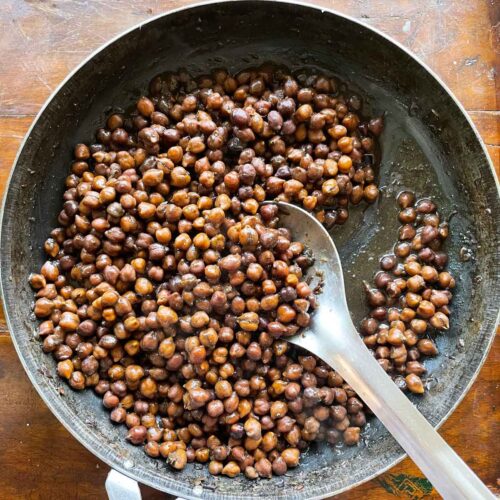
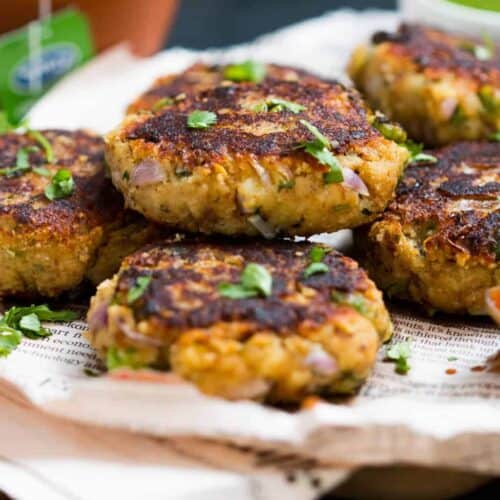
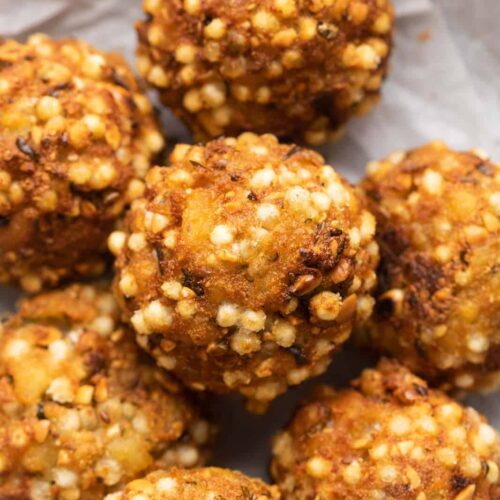
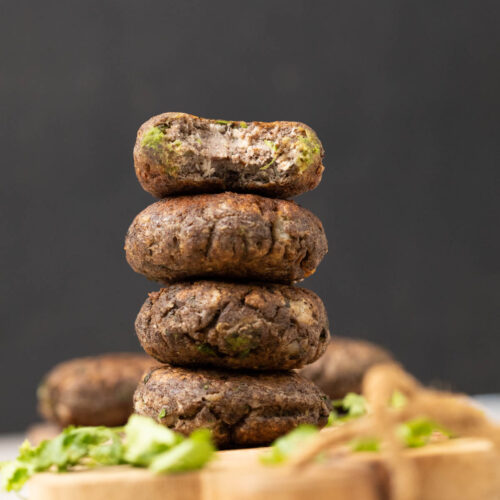
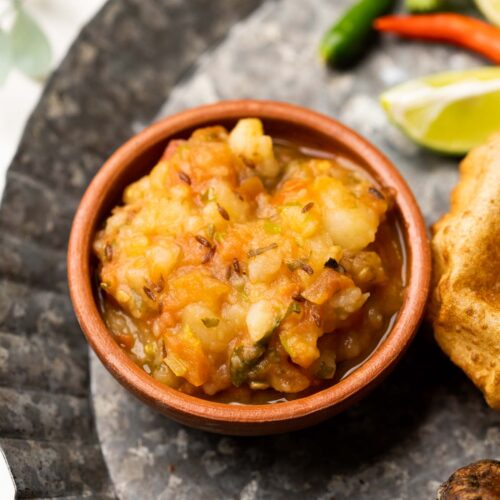
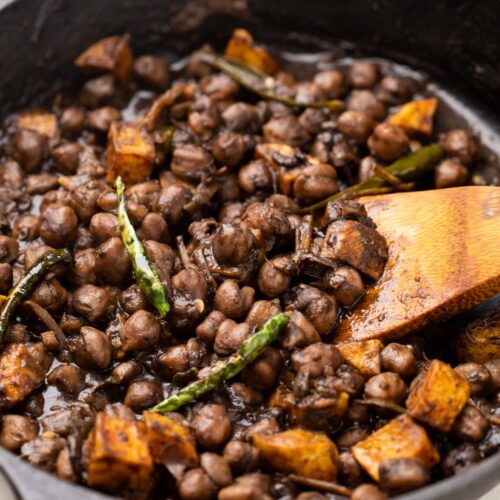
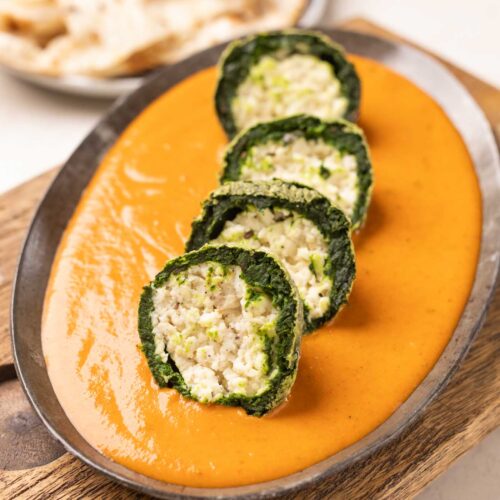

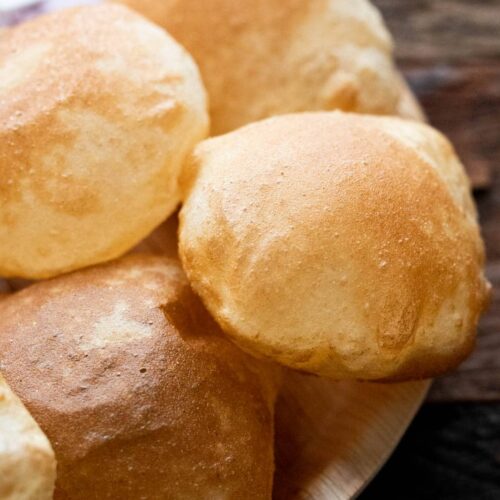

0 Comments